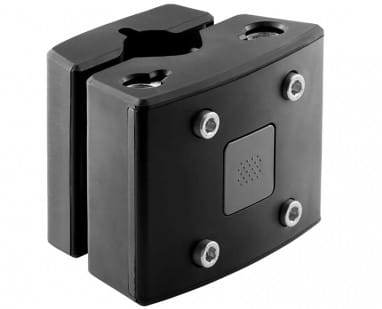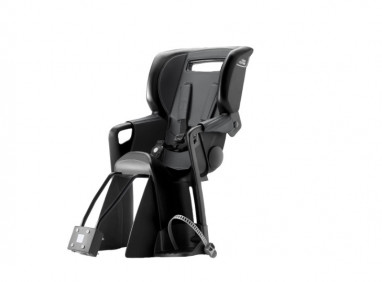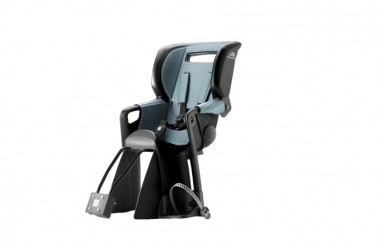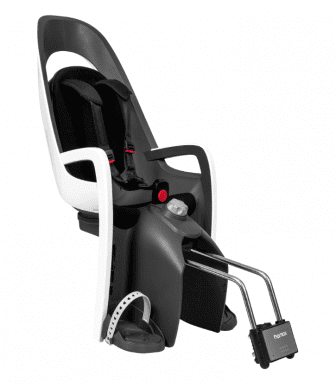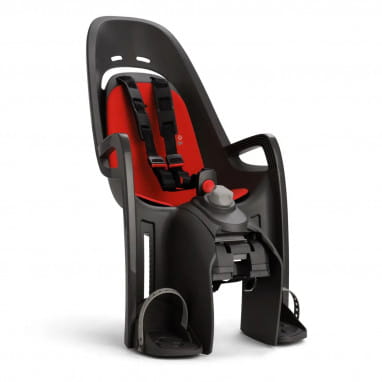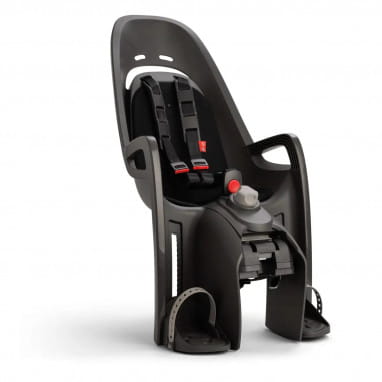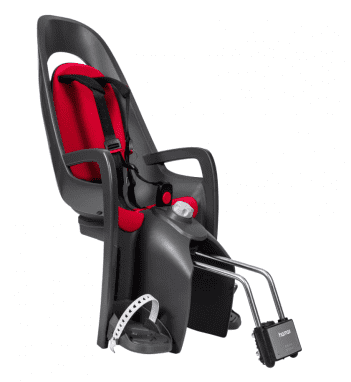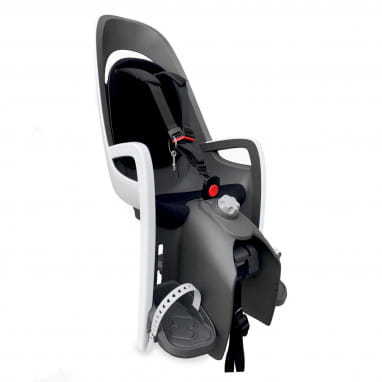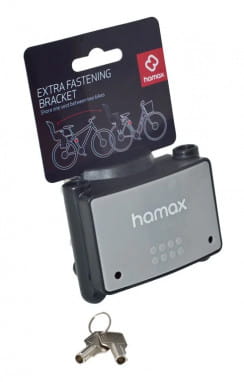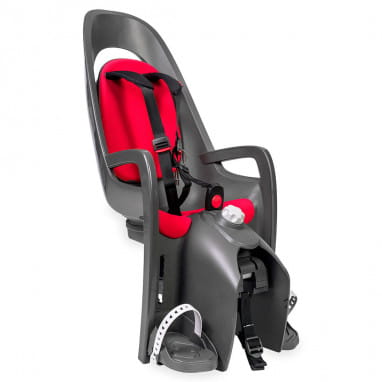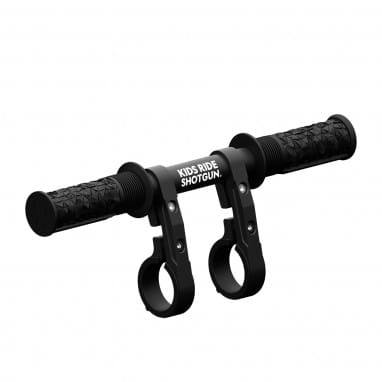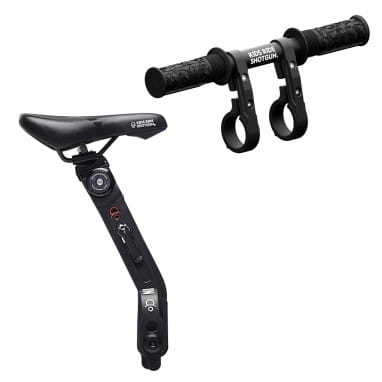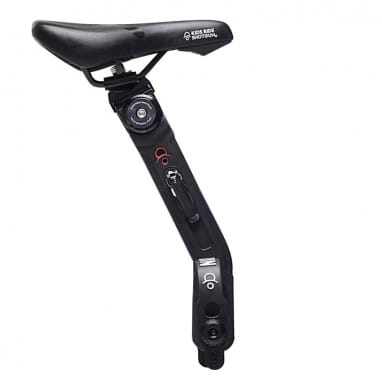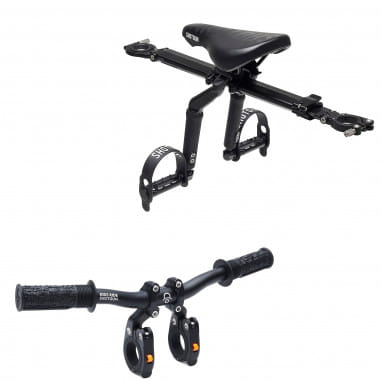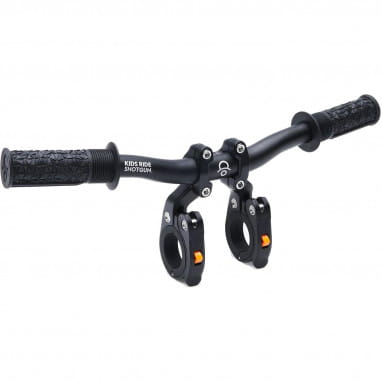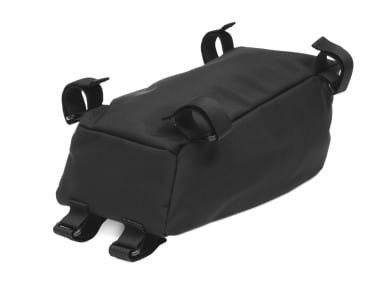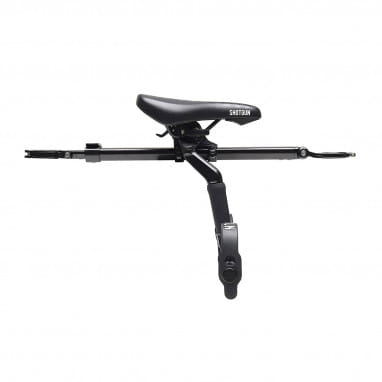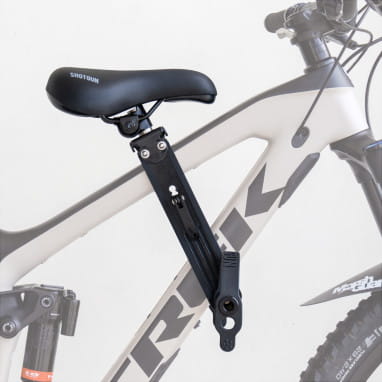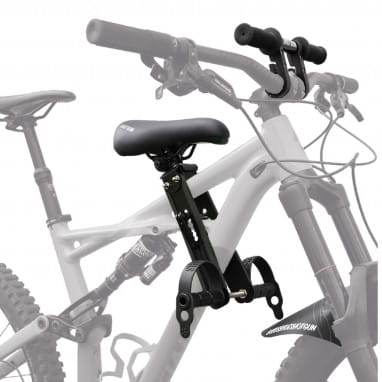Many parents want to take their child along on their bike as soon as possible. Some of them want to make memories and share a great family time, for other families bikes are simply their most important means of transport. There are some safe and practical solutions that allow you to transport not only your kids, but also all the bits and pieces you need on the road. A child seat on the rear rack is considered a very safe way to transport children on parents’ bikes. Find out all about kid’s bike seats!
When passionate cyclists become parents, it doesn't necessarily mean that their time on the bike is over. Sure, a very fresh baby is rather difficult to transport by bike. Newborns are too delicate, cool down quickly, and can't take a beating. Even in a children's bicycle trailer they are not really well accommodated, because there they travel behind the kicking parent and you have them therefore not in view. Slightly larger babies, on the other hand, can travel in a suitable child seat in a cargo bike or child trailer.
Child trailers have some disadvantages, however. They are heavy, make the tow bike ponderous and less maneuverable, plus their two wheels cause extra rolling resistance. Apart from that, they are significantly more expensive than any child seat.
It's a completely different story with a child seat mounted on the back of the parent's bike.
How does a bike with a child seat ride?
A child seat also changes how a bike rides. But don't worry, the difference isn't so severe that you can't get used to it in a short time and with a few practice laps. Of course, the seat and the child weigh a few kilos, so the bike will be a bit lazier. The child bike seat also changes the centre of gravity, but most cyclists get used to this quickly.
Can a child seat be fitted to any bicycle?
In principle, you can fit a child seat to any bike, whether it's a trekking bike, city bike, hardtail mountain bike or gravel bike. Many child seats are not really mounted on the carrier, they float above the carrier. A bracket is bolted to the frame of the large bike. The child seat is fixed in this bracket, so it has no contact with the luggage rack. This works on (almost) every bike, only on a MTB Fully the frame shape may not allow the attachment.
So there is for virtually every bike the possibility to attach a child seat.
- You can use a child seat in combination with different bikes, and without much conversion work! The retaining clips can be purchased individually, you can mount brackets on multiple bikes. So the seat can move from bike to bike in a flash.
- Child seats with retaining clips also work on bikes without racks.
- Your bike should be stable and in good condition if you want to fit a child seat. If in doubt, have an annual check beforehand. Especially the brakes of the bike must work well.
- Actually, the frame shape of the bike doesn't matter, but a low-entry bike is especially comfortable to climb on when a child seat is mounted.
- Caution is advised with carbon frames, they tolerate bolted equipment rather badly.
- Child seats may also be mounted on the e-bike, provided it supports up to 25 km/h. On the faster S-pedelecs child seats are prohibited.
What does a safe child seat look like?
There are car clubs and cyclist associations agree, a safe child seat is located behind the rider and it brings a little more material. At first glance, such a large child seat may seem bulky and heavy. But you must remember that the material of the seat is the safety zone for your child! The high backrest with the side head protection ensures that your kid won't end up on the road in case of a fall or accident. The wide leg restraints protect the legs in the event of an accident, they also prevent children from getting their feet stuck in the spokes of the bike.
These child seats also usually have three-point harnesses that a child can't undo on their own. This way, a child can't unbuckle themselves on the go. Also, the harness prevents your child from leaning out of the seat to the side and tipping the bike over
If the seat of your choice meets the DIN standard EN 14344, it is approved for road use. Many seats also have other TÜV seals, proving that the seat has been tested and is safe
<nbsp;< p="">.
From what age is a child bike seat suitable?
Your child can ride in a child bike seat if it can sit safely and stably under its own power. It must also be large enough to be held securely by the straps. The standard allows children from 9 to 22 kilos of body weight, or about 9 months to 5 years of age, to ride in it.
Does a child in a child bike seat have to wear a helmet?
In Germany, there is no helmet requirement, so it is not mandatory that a helmet be worn on the child seat. However, it is recommended that you never take a child on a bike without a helmet.
Please note that we cannot give any binding information on standards and laws.
This is what you should look for when buying a child seat:
- The child seat should have enough material to enclose your child laterally, so it provides more safety in case of accidents.
- Despite this, it should not be too heavy, after all, you still want to get off the ground.
- The straps must be adjusted so that your child can not slip out, but of course they should not press
- There should be nothing dangling from the seat that could get caught in your spokes
- Don't forget to buy a well-fitting children's helmet!
- Kids are more likely to accept a helmet if you set a good example. So pick out a fancy bicycle helmet while you're at it!
- If a child seat is attached, the rack is occupied. If you still want to carry some luggage, bike panniers that clip onto the side of the rack are a good idea.
- Next up, we promised you two more transportation options for kids on bikes: bike trailers for kids or a cargo e-bike are great alternatives to a child bike seat.
- In rainy weather, you can keep your passenger dry with a rain cover.
- In a good child seat, you can adjust the recline of the backrest. This way you can put the child in sleeping position when he is tired.
